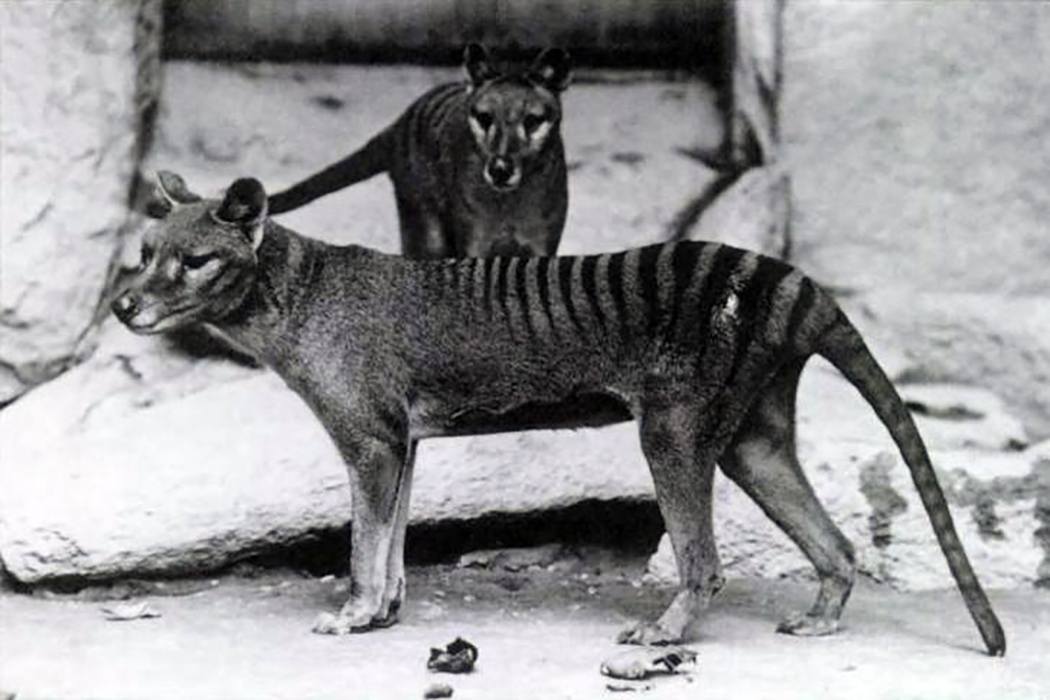In the generally accepted story, the last thylacine, a marsupial carnivore from Australia, died in captivity in the 1930s. The species was officially declared extinct in the 1980s.
Not everyone, however, is convinced. Unconfirmed sightings and rumors have persisted for decades. To put the matter to rest, a team of researchers is making one last attempt to find a living thylacine, 30 years after its official disappearance.
The thylacine, known alternately as the Tasmanian Tiger or Tasmanian Wolf, was a large predator weighing around 30kg. They originally ranged across both the Australian mainland and Tasmania. The arrival of aboriginal people in Australia, and the ensuing modification of landscapes, plus the introduction of competing dingos, was too much for thylacines in the mainland, but they may have briefly overlapped there with early European settlers.
The thylacine persisted in Tasmania, where it quickly ran afoul of a crucial economic development plan; sheep farming. The actual extent of predation on livestock was overstated, but thylacines were blamed for many of the sheep industry’s problems. The government placed a bounty on thylacines at the urging of the sheep industry in 1888. It didn’t help that the European scientific establishment demonized thylacines as vicious, blood-drinking beasts. The bounty was rescinded in 1909, but the thylacine did not receive any formal protection until 1936—the year the last one died.
But could there be a small population hanging on somewhere? Extinction is extremely difficult to prove. Until 1995, for a species to be declared extinct, there couldn’t be any confirmed sightings for 50 years. However, 50 years of sitting around vs. 50 years of actively looking are not the same. As a result, now an extinction declaration requires that a very thorough, expert search turns up no evidence of living specimens. Some argue that both a failed search effort and a waiting period should be the standard since rediscovery of extinct species is practically routine. In fact, in a study of 187 mammals believed to be extinct since 1500, 67 have since been rediscovered.
The reason for extinction impacts the probability of rediscovery. Species that once had wide ranges but were believed extinct due to habitat loss were more frequently discovered hanging on in remote pockets of habitat. Species driven extinct due to overexploitation, on the other hand, were truly gone. Species that had small ranges to begin with are also generally extinct when people stop seeing them.
So what does all this mean for the thylacine? By the above criteria, thylacines are likely extirpated from Tasmania, but maybe not on the Australian mainland where the search is taking place. The search is focused around a particularly credible recent sighting. There’s real hope. Just recently, the Australian night parrot was rediscovered after decades of presumed extinction. And never forget the coelacanth, believed extinct for 65 million years before surfacing in fisherman’s net in 1938.
GET MORE STORIES LIKE THIS: SIGN UP FOR OUR FREE WEEKY EMAIL NEWSLETTER.








